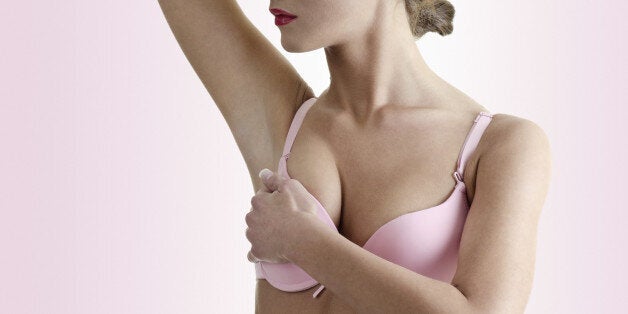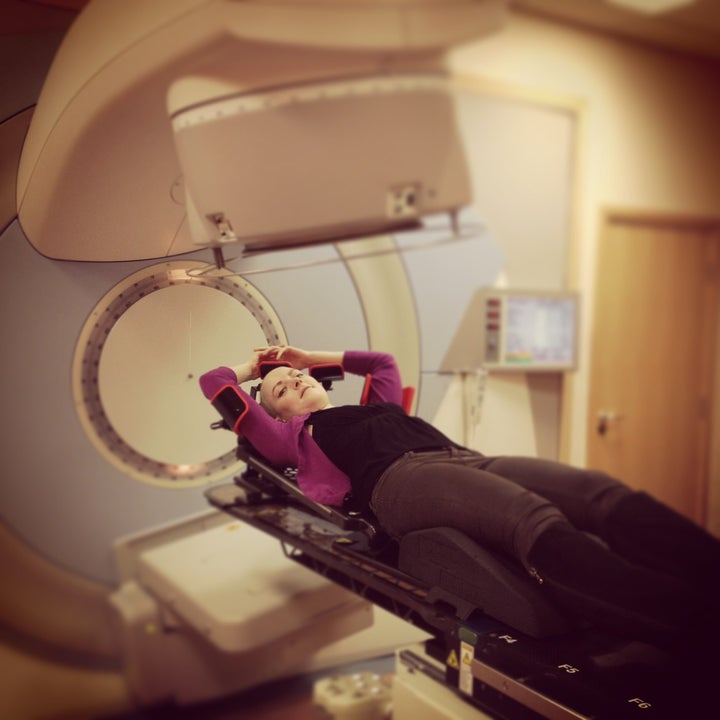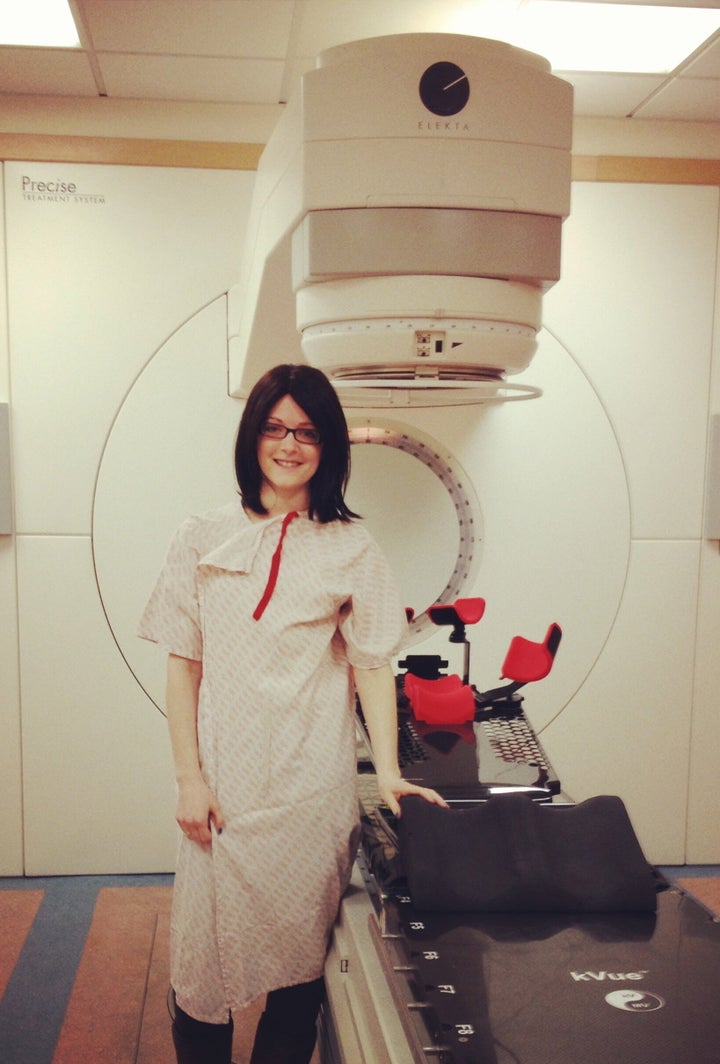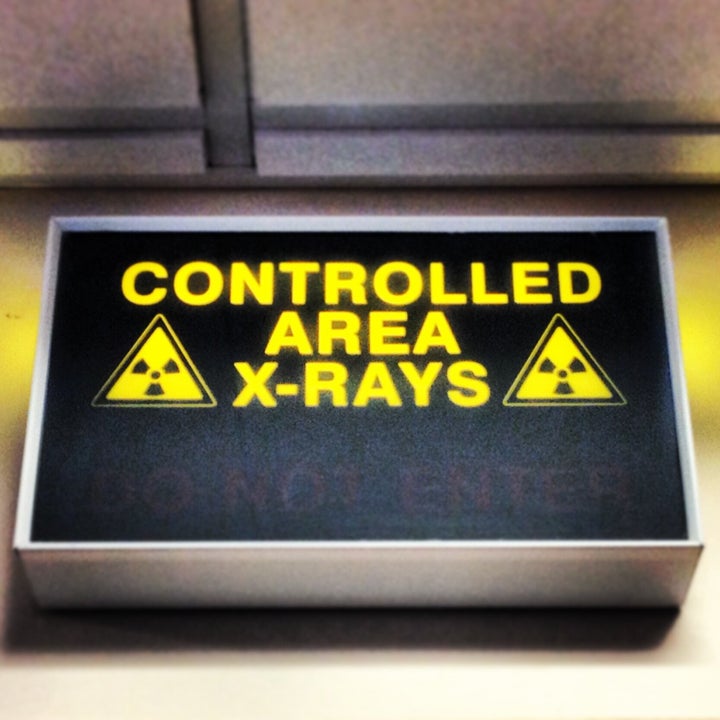
"Five-centimetre soup!" the first radiation therapist calls out to the second radiation therapist.
Five-centimetre soup? I wonder, as I lie on my back on the radiotherapy machine, arms in clamps above my head and breasts fully exposed to the team of three female professionals and one young male medical student.
Now, forgive me for automatically thinking of the vegetable kind of soup, but when you've spent the past few months of chemo consuming every kind of soup and trying to work out how to use diet to prevent breast cancer recurrence, you tend to have broth on the brain.

Of course, this was not the minestrone kind of soup but the technical kind. "Five centimetres supe" was, in fact, an instruction to move my body five centimetres superior, to line up my boob tattoos with the green laser beams coming down from the radiotherapy machine.
And yes, I did just say 'boob tattoos'. Of all the things we associate with breast cancer, boob tattoos aren't usually at the top of the list. But in December I found myself at Dublin's St. Vincent's hospital having a CT scan and three tiny tattoos - one in the middle of my chest, between my breasts, and one either side of my body, a few inches below each armpit. They're not elaborate love hearts or anything like that - just tiny dots to allow the radiotherapy machines to line up in exactly the right spot where the evil tumour used to live, and zap the shit out of any remaining cancer cells.

So there I was, on 2 January, lying under the big, white machine. The routine was simple: I would take off my clothes from the waist up, don a comfy white medical robe and lie on my back on the machine while the radiation therapists called out different numbers, making sure I was properly lined up. Then they would exit the room, the machine would buzz and whirr at me for a few minutes while I listened to whichever CD they decided to play that day (often One Direction), and then I'd get up and go home. It was over in 10 minutes every time.
66 Grays of Radiation
Radiotherapy is measured in units called 'grays,' and I was to have two grays per session, for 33 sessions: 25 to my whole left breast, and 8 targeted to the area where the tumour was. Delivering the entire 66 grays of radiation in one fell swoop would, I'm told, be way too much for the body to handle, so instead I went to the hospital every weekday for seven weeks for my daily dose of cancer killer.
When we talk about radiotherapy, many people picture that scary, dark MRI tunnel or imagine us giving off some kind of harmful radioactive rays, but the reality for me was rather different. I didn't feel a thing, let alone any pain, and I wasn't a danger to others. Besides, I couldn't possibly feel afraid in a room surrounded by cheerful, competent young women, with Harry, Louis, Zayn, Liam and Niall serenading me from the stereo in the background!

There are two main side effects of radiotherapy: physical and mental tiredness, and skin soreness and irritation. I'm certainly experiencing the exhaustion, but fortunately I got away pretty much scot-free with the latter. I do have to apply copious amounts of aloe vera gel to the area twice a day and I can't use perfume or shower gel, but that's the least of my worries after going through surgery and chemotherapy. The slightly bigger deal is the fact I'm not allowed to shave my left armpit, which is getting rather hairy now my hair's started to grow back, but let's just say you get a different perspective on bodily hair and appearance after six months of being completely bald.
End of Treatment
On 15 February, I had my last radiotherapy session and bid a fond farewell to the amazing staff at St. Vincent's. That pretty much concluded eight long months of cancer treatment: one operation, six rounds of chemo, 33 rounds of radio, roughly 80 injections, 40 self-injections, more than 50 hospital trips, five overnight stays in hospital, three seasons, one birthday and a serious amount of cups of tea.
"Congratulations!" they all said. "It's all over!"

The thing is, they say the hardest part of cancer is when the treatment ends. I managed to get through my first 29 years without being in hospital but I'll have to go back every year for the rest of my life without fail. For the next couple of years, there'll be check-ups every few months and there'll always be that fear that the cancer has come back. And for the next five years, I'll be suffering from the hourly hot flushes and other symptoms that are part and parcel of the oestrogen-suppressing Tamoxifen drugs. And don't get me started on the emotional side.
But I'm ok with all that. As long as I'm under the care of the doctors, I'll feel I'm being looked after. The journey is far from over, but at least I get a little reprieve from the daily hospital trips. Cancer is in my life now, but I'm not going to let it define me.
Now I just have to decide whether to get those boob tattoos embellished to celebrate my victory over the big C-bomb...